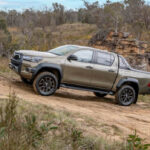The Toyota Supra’s age reflects its rich history, beginning in 1978 and continuing to the present day with the latest GR Supra models, available at millertoyota.net. This legendary sports car has evolved through multiple generations, captivating enthusiasts with its performance and iconic design. Explore the timeline, generations, and evolution of this celebrated vehicle, including information on maintenance, performance, and available models at Miller Toyota in Boise, Idaho.
1. The Origin of the Toyota Supra: A Throwback to the 70s
How Old Is The Toyota Supra when considering its origins? The Toyota Supra’s story begins in April 1978, marking its initial entry into the automotive world as a sportier version of the Celica. The first Supra, internally known as the Celica XX or A40, was designed to rival popular grand tourers in the Japanese and North American markets, particularly Datsun’s Z-cars. The A40 Celica Supra distinguished itself from the standard Celica by featuring a longer, wider body and a more powerful six-cylinder engine, providing a smoother and more luxurious driving experience.
 Toyota Celica Supra XX
Toyota Celica Supra XX
This model was a strategic move by Toyota to capture a segment of the market that desired both performance and comfort. According to Toyota’s official history, the Supra’s development was driven by a need to offer a competitive alternative to existing sports coupes, focusing on enhanced power and a refined driving experience. The original Celica Supra laid the groundwork for what would become one of Toyota’s most iconic sports cars, showcasing the brand’s ambition to innovate and compete in the global grand tourer market.
2. The Second Generation: Toyota Supra Evolves into a Sports Car
How old is the Toyota Supra in its second generation? The second generation, known as the A60 Celica Supra, was introduced in Japan in July 1981, marking a significant step in its evolution. This model embraced a more sporting identity, diverging from the Celica with its own unique characteristics. In export markets, it was consistently sold as the Celica Supra. By August 1982, the Celica Supra was available in Europe. Its availability in the UK was limited to just 100 cars per month, adding to its exclusivity.
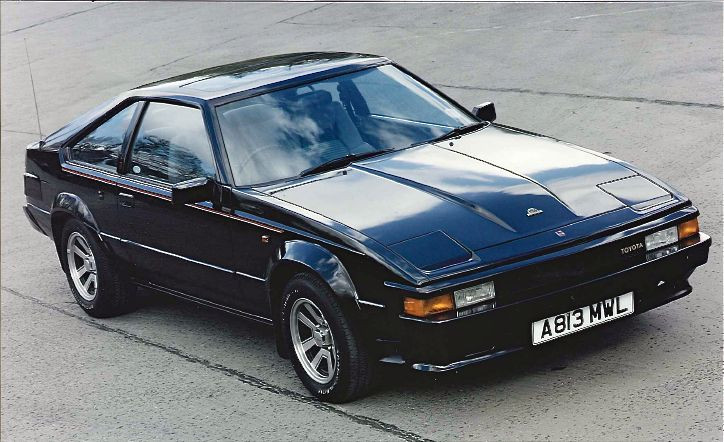 1984 Toyota Celica Supra
1984 Toyota Celica Supra
While sharing the Celica’s design up to the B-pillar, the Supra featured a longer wheelbase and a stretched front end. This allowed Toyota to equip it with a straight-six engine, most notably the 2.8-liter 5M-GE twin-cam engine. This engine became a hallmark of the Supra, enhancing its performance capabilities. Additional distinguishing features included retractable headlights, flared wheel arches, and independent rear suspension, all contributing to its appeal among sports car enthusiasts. This generation of the Supra solidified its position as a performance-oriented vehicle, setting the stage for its future as a standalone model.
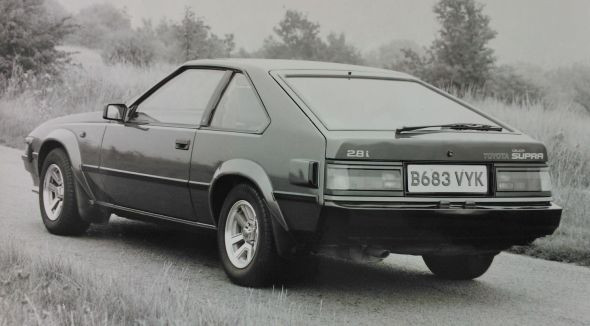 Mk2 Toyota Supra 2.8
Mk2 Toyota Supra 2.8
3. Motorsport Success: Toyota Supra’s Early Racing Triumphs
How old is the Toyota Supra when taking into account its early motorsport achievements? Unlike the first-generation Celica Supra, which mainly served as a pace car, the A60 Celica Supra actively participated in motorsports. Win Percy achieved significant success in the British Saloon Car Championship (BSCC) during the 1983 season, driving a Celica and Corolla before transitioning to the Celica Supra.
In 1984, Percy won the ninth round of the series, competing against formidable opponents like Andy Rouse’s 3.5-liter Rover. In 1985, racing legend Barry Sheene took over Percy’s car for the BSCC season. Simultaneously, Per Eklund secured the Group A championship in the Ulster Rally with his Celica Supra. These achievements underscore the A60 Celica Supra’s capabilities on the track and its growing reputation as a competitive sports car.
4. The Third Generation: Toyota Supra Becomes an Independent Model
How old is the Toyota Supra when it became an independent model? Toyota ceased production of the A60 Celica Supra in December 1985. The fourth-generation Celica was introduced in August of the same year. From this point forward, the Celica and Supra became distinct models built on separate platforms. The Celica transitioned to front-wheel drive, while the Supra remained a rear-wheel-drive grand tourer. The A70 Supra, launched in February 1986, featured an all-new coupe body that was slightly shorter than its predecessor.
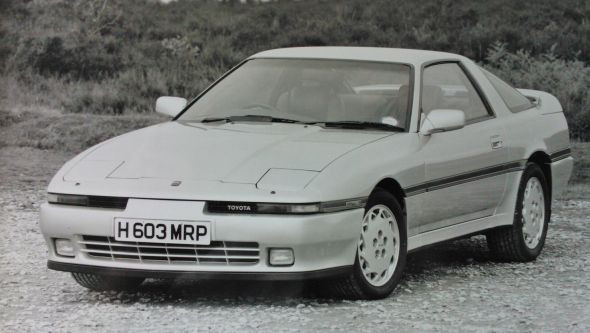 Mk3 Toyota Supra front
Mk3 Toyota Supra front
Its design bridged the gap between a sports car and a comfortable cruiser. It featured double-wishbone suspension at all four corners, with upper arms made from forged aluminum to reduce weight. The suspension links were attached to subframes to minimize cabin vibrations.
Depending on the market, the third-generation Supra was available with four straight-six engines ranging from 2.0 to 3.0 liters. The most powerful was the 2954cc 7M-GTE turbocharged and intercooled twin-cam engine, which produced 230bhp in the Japanese 3.0GT Turbo model. The 7M-GTE engine was later upgraded to 270bhp for the limited-edition 3.0GT Turbo A, which was homologated for Group A racing in Japan and touring car championships in Europe.
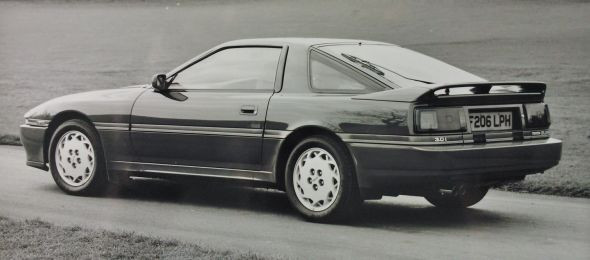 Mk3 Toyota Supra rear
Mk3 Toyota Supra rear
5. UK Sales and Performance: Toyota Supra’s Rise in Popularity
How old is the Toyota Supra considering its arrival and impact on the UK market? The UK market launch of the third-generation Supra in July 1986 featured competitive pricing. It aimed to align with rivals despite import costs. European models came standard with a rear spoiler. Options included metallic paint, leather upholstery, and an automatic gearbox. Testers of the time highlighted the Supra’s refinement. It was virtually unmatched for long-distance motorway cruising. Performance, handling, and ride were also praised.
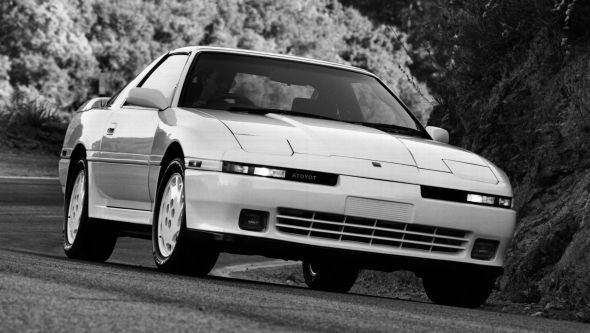 Mk3 Toyota Supra moving
Mk3 Toyota Supra moving
In 1987, the Celica, MR2, and Supra secured the top three positions in What Car? magazine’s Best Coupe award. The UK market received a Turbo version in August 1989 after a midlife facelift. It was powered by the same engine as the domestic 3.0GT Turbo, delivering 15% more power and 35% more torque. This increased the top speed to 153mph, with acceleration from 0 to 60mph in 6.1 seconds. The Supra Turbo was also available in a White Pack, with all exterior trim finished in Brilliant White.
6. Facing Competition: Toyota Supra in the Late Eighties and Early Nineties
How old is the Toyota Supra when considering the competition it faced in the late 80s and early 90s? The Japanese car industry saw significant success in the late 1980s and early 1990s. Toyota’s rivals launched vehicles like the Nissan 300ZX, Mazda RX-7, Honda NSX, and Mazda MX-5. Amid this competition, anticipation was high for the launch of the A80 Supra. Toyota continued producing the third-generation model until 1992.
The company wanted to ensure the new vehicle would surpass the competition. Toyota replaced the 7M-GTE in domestic market Supras with a new 2.5-liter twin-turbo engine. This engine came from the JZ-series, which became the core of the next-generation Supra. This strategic upgrade prepared the Supra to compete with the advanced sports cars of the era.
7. The Fourth Generation: Toyota Supra Reaches New Heights
How old is the Toyota Supra in its fourth generation, and what made it so special? The highly anticipated fourth-generation (A80) Supra debuted at the 1993 Chicago Motor Show. It followed four years of development under chief engineer Isao Tsuzuki. Tsuzuki had previously worked on the first Celica and both generations of the MR2. The A80’s design and proportions were reminiscent of the 2000GT from the Sixties, setting it apart from previous Toyotas. Its aerodynamic efficiency was enhanced by a long, low bonnet line and an optional high-rise rear spoiler.
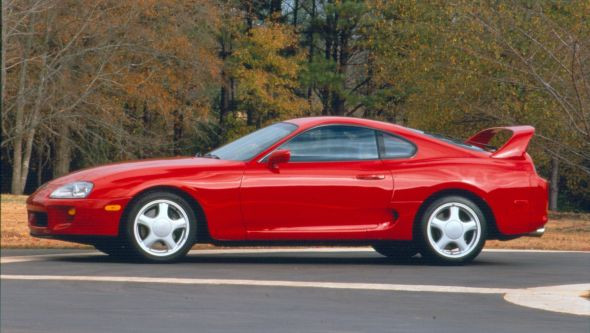 Mk4 Toyota Supra Turbo
Mk4 Toyota Supra Turbo
The development of the A80 focused on “less is more,” resulting in shorter, lower, and wider dimensions compared to its predecessor. Extensive use of lightweight materials reduced its mass by 100kg. The engine lineup included naturally aspirated and twin-turbocharged 3.0-liter JZ-series straight-six engines, offering between 220bhp and 326bhp. Top-spec turbo versions with Toyota’s first six-speed gearbox delivered supercar performance.
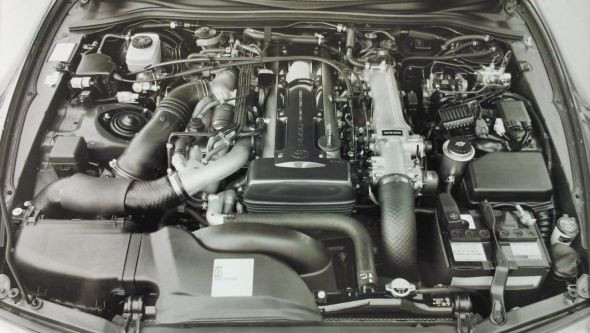 Toyota 2JZ-GTE engine
Toyota 2JZ-GTE engine
8. Global Acclaim: Toyota Supra as a World-Beater
How old is the Toyota Supra when considering its global impact and critical acclaim? Shortly after its June 1993 launch in the US, the fourth-generation Supra received rave reviews. It outperformed rivals like the Porsche 911 Turbo. One Australian magazine favorably compared it to the Aston Martin DB7, which the Supra surpassed on an objective level.
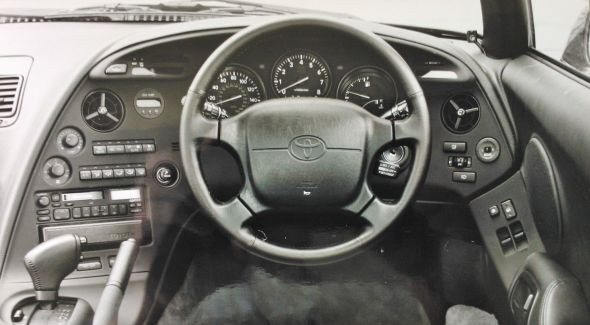 Mk4 Toyota Supra interior
Mk4 Toyota Supra interior
The UK press also praised the new Supra, which was available only as a turbo version in Europe. The 2JZ-GTE engine was celebrated for its flexibility, delivering 90% of peak torque from 1,300 to 4,500rpm. The car’s aerodynamically-enhanced stability made it feel like it was traveling at half its actual speed of 156mph. The 2JZ engine proved to be an engineering masterpiece. Tuned versions have reached up to 2041bhp.
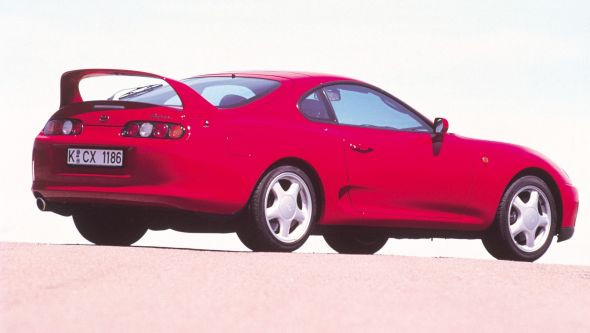 Mk4 Toyota Supra rear
Mk4 Toyota Supra rear
9. Motorsport Dominance: Toyota Supra’s Racing Legacy
How old is the Toyota Supra, and what is its legacy in motorsport? The Mk4 Supra achieved significant success in motorsport, maintaining its front engine, rear-wheel-drive configuration. It won its class in the Swiss Mountain Races. It competed in the Le Mans 24hr race for two consecutive years. It participated in events such as Pikes Peak and American SCCA racing. From 1995 to 2003, it dominated the All-Japan GT Championships (JGTC).
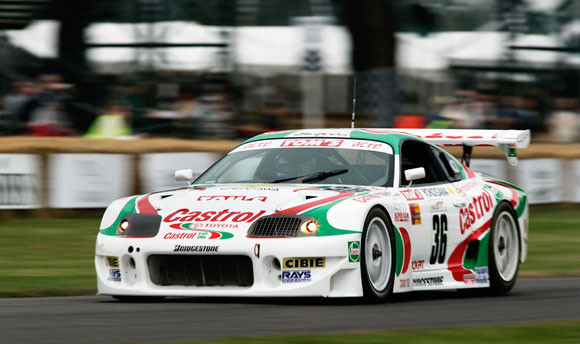 1997 TOMs Toyota Supra JGTC
1997 TOMs Toyota Supra JGTC
Despite these successes, purchasing trends shifted away from sports cars. By late 1996, the A80 Supra was discontinued in the UK, with 600 sales out of 16,000 total Supras sold across all generations. North American sales ended by 1998. Production continued in the domestic market with reduced annual runs until July 2002. The Supra was discontinued due to the high cost of meeting emissions targets. From April 1978 to July 2002, total production of the Celica Supra and Supra models reached 593,337 units.
10. The Return of a Legend: The Toyota GR Supra
How old is the Toyota Supra now that it has made a comeback? After many years, the possibility of a fifth-generation Toyota Supra seemed like a distant dream. However, hope was rekindled with the unveiling of the Toyota FT-1 concept in January 2014. A second version of the front-engine, rear-wheel-drive sports car was revealed eight months later. The most notable change was the color, which shifted from bright red to graphite grey.
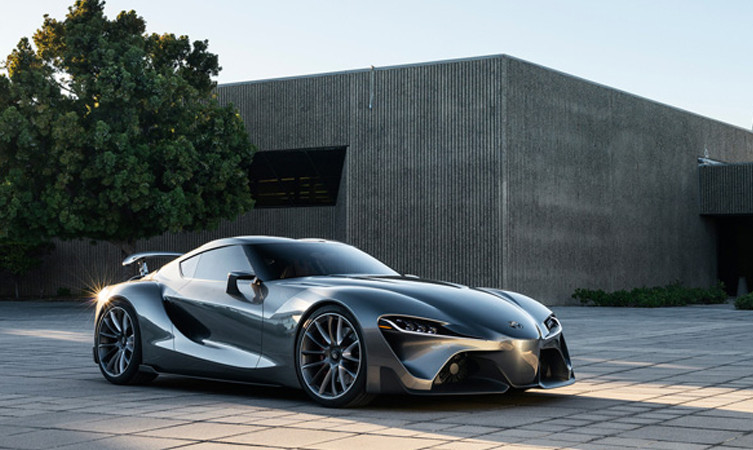 Graphite Toyota FT-1
Graphite Toyota FT-1
Further information on a production version was scarce until Toyota released a teaser image ahead of the 2018 Geneva International Motor Show. The accompanying text signaled Toyota’s commitment to bringing back its iconic sports car. The Toyota GR Supra Racing Concept revived the name and spirit of Toyota’s celebrated sports car. It also demonstrated Toyota’s commitment to bringing the Supra back to the market.
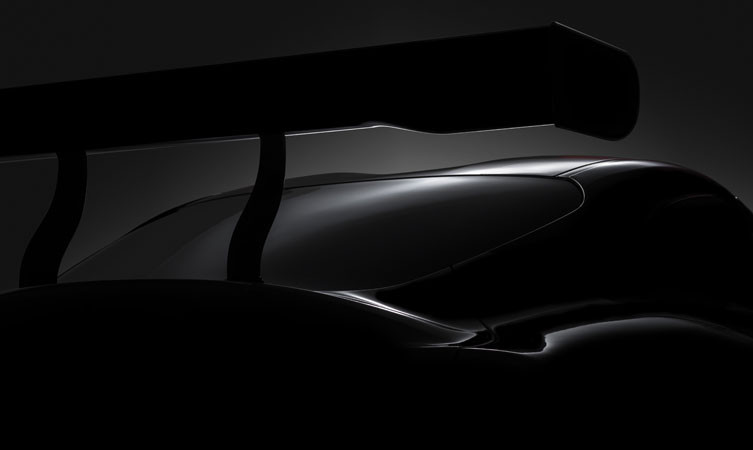
A Toyota Supra prototype was revealed, still under disguise. Early reviews of the near-production-ready car were encouraging. Seventeen years after production ceased, the new fifth-generation (A90) Toyota GR Supra is back in full production. The Supra’s story continues with its availability at millertoyota.net.

11. What Are The Key Generations and Timeline of the Toyota Supra?
Here’s a quick look at the evolution of this model:
| Generation | Years | Description |
|---|---|---|
| Celica Supra (A40/A50) | 1978-1981 | The original Supra, a longer, wider, and more powerful version of the Celica. |
| Celica Supra (A60) | 1981-1986 | Featured a more sporting design and was sold as Celica Supra in all export markets. |
| Supra (A70) | 1986-1993 | Became an independent model with a new coupé body and advanced suspension. |
| Supra (A80) | 1993-2002 | Known for its performance and aerodynamic design, it achieved significant motorsport success. |
| GR Supra (A90) | 2019-Present | The revival of the Supra, blending modern technology with the classic Supra spirit. |
12. What Are The Performance Specs Of Each Toyota Supra Generation?
Here is an overview of the engine options and power outputs for each generation:
| Generation | Engine Options | Horsepower Range |
|---|---|---|
| Celica Supra (A40/A50) | 2.6L and 2.8L Inline-6 | 110-116 hp |
| Celica Supra (A60) | 2.8L Inline-6 (5M-GE) | 145-178 hp |
| Supra (A70) | 2.0L, 2.5L, and 3.0L Inline-6 (including 7M-GTE Turbo) | 150-230 hp |
| Supra (A80) | 3.0L Inline-6 (2JZ-GE) and 3.0L Twin-Turbo Inline-6 (2JZ-GTE) | 220-326 hp |
| GR Supra (A90) | 2.0L Turbo Inline-4 and 3.0L Turbo Inline-6 (Partnered with BMW) | 255-382 hp |
13. What Are the Iconic Design Elements of the Toyota Supra Through the Years?
| Feature | A40/A50 Celica Supra | A60 Celica Supra | A70 Supra | A80 Supra | A90 GR Supra |
|---|---|---|---|---|---|
| Headlights | Rectangular | Retractable Pop-Up | Retractable Pop-Up | Sleek Integrated | LED, Aggressive Design |
| Body Style | Liftback Coupe | Liftback Coupe | Coupe | Coupe | Coupe |
| Rear Spoiler | Integrated | Optional | Integrated/Optional | Large, High-Mounted | Integrated Ducktail |
| Overall Shape | Angular | Sharper, Sportier | Rounded, Streamlined | Aerodynamic, Curvy | Compact, Muscular |
| Key Design Trait | Grand Tourer | Performance Focus | Independent Design | Iconic Aerodynamics | Modern Interpretation |
14. What Are The Most Notable Technological Advances in Toyota Supra Models?
| Technology | A70 Supra | A80 Supra | A90 GR Supra |
|---|---|---|---|
| Engine Management | Advanced EFI Systems | Dual Sequential Turbo System | Direct Injection, Variable Valve Timing |
| Suspension | Double Wishbone Suspension | Optimized Suspension Geometry | Adaptive Variable Suspension (AVS) |
| Brakes | Vented Disc Brakes | Large 4-Piston Caliper Brakes | High-Performance Brembo Brakes |
| Safety Features | Basic ABS | Improved ABS, Traction Control | Toyota Safety Sense (Pre-Collision, Lane Departure, Adaptive Cruise Control) |
| Infotainment | Basic Audio Systems | Optional CD Player, Upgraded Sound | Modern Infotainment System with Navigation, Apple CarPlay |
15. How Has the Toyota Supra Performed in the Automotive Market Over the Years?
| Period | Market Performance | Factors Influencing Performance |
|---|---|---|
| 1978-1986 | Steady Growth, Established Presence | Introduction as a Celica Variant, Gradual Increase in Performance and Features |
| 1986-2002 | Peak Popularity, Motorsport Success | Independent Model, Turbocharged Engines, Advanced Technology, Racing Achievements |
| 2019-Present | Highly Anticipated Return, Positive Reception | Revival of a Legendary Nameplate, Modern Performance and Technology, Collaboration with BMW |
16. How Can You Maintain and Care For A Toyota Supra To Prolong Its Life?
- Regular Maintenance: Follow the recommended service schedule in your owner’s manual. This includes oil changes, filter replacements, and fluid checks.
- Use Quality Parts: Always use genuine Toyota parts or high-quality aftermarket parts to ensure reliability and performance.
- Proper Storage: If storing your Supra for an extended period, use a car cover, stabilize the fuel, and disconnect the battery.
- Check Tires Regularly: Maintain proper tire pressure and inspect tires for wear and tear.
- Keep It Clean: Regularly wash and wax your Supra to protect the paint and prevent rust.
17. What Are Some Common Issues And Problems With Older Toyota Supra Models?
- Turbo Issues (A70/A80): Older turbocharged models may experience turbocharger problems, such as leaks or failures, due to age and wear.
- Rust: Depending on the climate and storage conditions, rust can be an issue, particularly in older models.
- Electrical Problems: Aging electrical components can lead to various issues, such as sensor failures or wiring problems.
- Suspension Wear: Over time, suspension components like bushings and shocks may wear out, affecting handling and ride quality.
- Engine Maintenance (2JZ): While the 2JZ engine is robust, proper maintenance is crucial. Neglecting maintenance can lead to issues with oil consumption and valve train components.
18. What Resources Are Available for Toyota Supra Owners in Boise, Idaho?
- Miller Toyota: As an authorized Toyota dealer, Miller Toyota in Boise offers expert service, genuine parts, and knowledgeable staff to assist with all your Supra needs. Visit millertoyota.net or call +1 (208) 376-8888.
- Online Forums: Online forums like SupraForums.com provide a community for Supra enthusiasts to share information, ask questions, and find solutions to common problems.
- Local Mechanics: Many independent mechanics in Boise specialize in Japanese vehicles and can provide maintenance and repair services for your Supra.
- Parts Suppliers: Online retailers and local auto parts stores offer a wide range of parts for Toyota Supras, from maintenance items to performance upgrades.
19. What Are The Toyota Supra Generations That Are Still Popular Today?
- A80 Supra (1993-2002): The fourth-generation Supra remains incredibly popular among enthusiasts due to its iconic design, powerful 2JZ engine, and tuning potential.
- A90 GR Supra (2019-Present): The modern GR Supra has garnered attention for its performance, handling, and blending of classic Supra elements with modern technology.
20. How Can You Find A Toyota Supra For Sale In The Boise Area?
- Miller Toyota: Visit millertoyota.net to check current inventory of new and used Toyota vehicles.
- Online Marketplaces: Websites like Autotrader, Cars.com, and Craigslist often have listings for Supras in the Boise area.
- Local Classifieds: Check local classified ads in newspapers or online community boards for potential Supra listings.
- Car Auctions: Consider attending local car auctions, where you may find a Supra for sale.
Toyota Supra has a remarkable history spanning several decades, visit millertoyota.net for up-to-date information.
Interested in experiencing the legacy of the Toyota Supra for yourself? Visit millertoyota.net today to explore our current inventory, schedule a test drive, and learn more about our service options. Contact us at +1 (208) 376-8888 or visit our location at 208 N Maple Grove Rd, Boise, ID 83704, United States.
